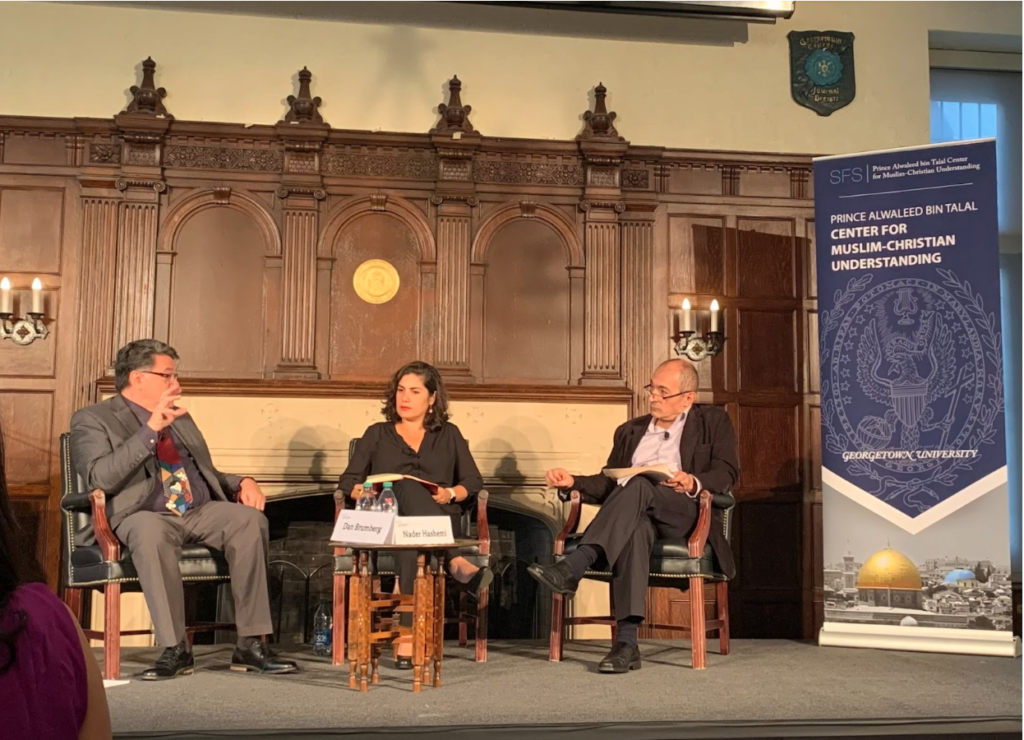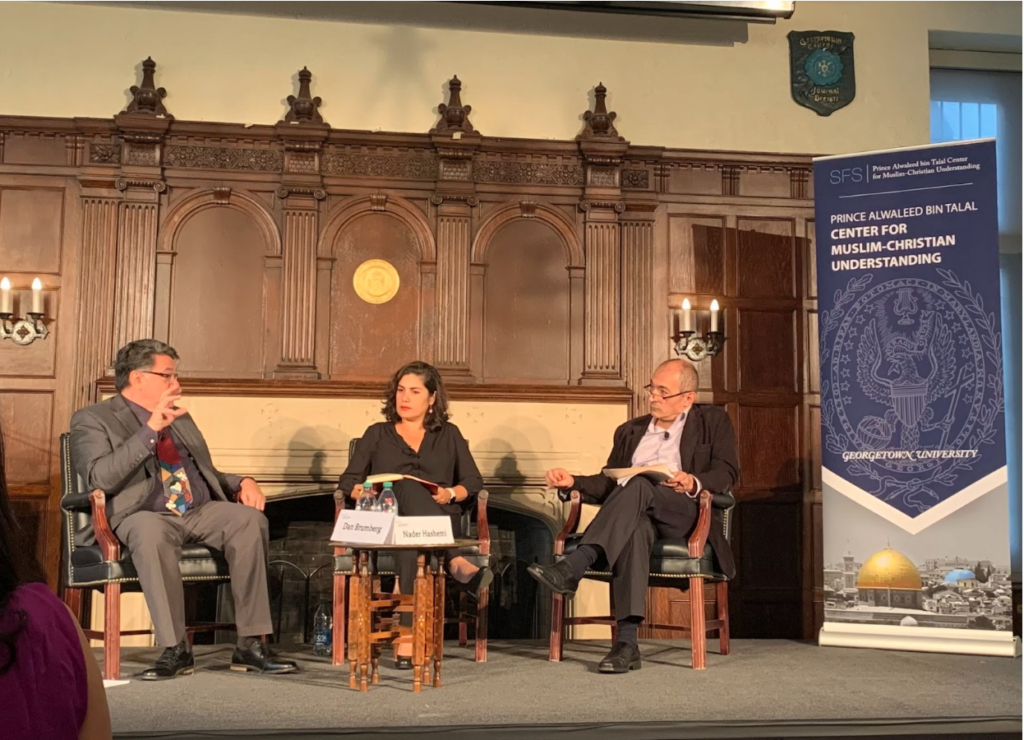Several scholars came together on Sept. 27 to reflect on the global effects and continued activism of Iranians on the one-year anniversary of Mahsa Amini’s death.
The event, hosted by the Alwaleed Center for Muslim Christian Understanding (ACMCU), included panelists Daniel Brumberg, associate professor of government, and Negar Mortazavi, award-winning Iranian journalist and commentator. The conversation was moderated by Nader Hashemi, ACMCU director and associate professor of Middle East and Islamic politics.
Panelists discussed the future of Iran, global human rights and the U.S.’s complex relationship with Iran.
Mortazavi began the discussion by reminding the audience of Mahsa Amini’s murder on Sept. 16, 2022, which spurred nationwide protests in Iran. Amini, a young woman and member of Iran’s oppressed Kurdish minority, was visiting Tehran with her brother when she was arrested by Iran’s morality police for allegedly not wearing her hijab correctly in public. Amini subsequently died in police custody after being subjected to beatings.
Coined the “Mahsa movement” or “Woman, Life, Freedom” uprising, countless Iranian women and girls took to the streets and threw their head scarves up in protest after Amini’s death, retaliating against the Iranian government.

Mortazavi said these protests were not an isolated reaction to Amini’s death but a culmination of anger against the Iranian regime brought to a breaking point.
“Looking at the protests, this is a combination of years and years of grievances — political, economic, social, cultural,” Mortazavi said.
The protests were especially symbolic because more than 70% of Iran is under the age of 40, demonstrating Iranian youth’s concerns for human rights and condemnation of the regime’s measures against women, according to Mortazavi.
Mortazavi said these protests are a step forward for Iranians in fighting against government control.
“What we saw was a giant leap as a continuation of women slowly pushing back this state,” Mortazavi said.
Brumberg said that the protests aimed to create systematic change in Iran.
“The importance of protest movements is not only that they make moral and political demands in regimes but they expose their abuses,” Brumberg said at the event.
Brumberg commended the protesters’ ability to facilitate dialogue between the regime and opposing ideologies.
“They create a space where elements within the regime might be able to reach out to members of the opposition and begin the change of political dynamic,” Brumberg said.
Brumberg said that while he is not optimistic that the protests will cause a huge shift in what he called the “nature of the regime,” he pointed to the tension the protests have sparked in the regime.
“What we saw in the wake of these protests over the last year was that the protests have in fact provoked fissures within the regime,” Brumberg said.
The panel did not express much enthusiasm for broad U.S. economic sanctions imposed on Iran, as they have not brought forth definite policy change. Rather, they have created economic hardships for Iranians.
The panel also discussed the Iranian government’s brutal crackdown on protests. Iran has violently repressed any show of support related to justice for Amini, including barring individuals from attending Amini’s gravesite on the one-year anniversary of her death by flooding the road.
Mortazavi said the Iranian government was willing to use violent tactics against all, including children.
“The morality police have clearly failed. It’s a force of harassment, public violence against women,” Mortazavi said.
Brumberg said that despite the UN Special Rapporteur’s designation of the Iranian government’s level of violence as a “crime against humanity,” the regime will continue to tighten its power on Iranian women.
“This is a revolutionary regime born of violence. The cost of liberation for this regime is very high,” Brumberg said.
The panel discussed the importance of the song “Baraye” by Shervin Hajipour, the anthem of Amini protests, which deeply speaks to the conflict in the region.
“The lyrics are a combination of tweets by young Iranians and it’s just so simple. Essentially it’s saying why are we doing this. Because we want a normal life. A simple life. And it’s just a very simple statement,” Mortazavi said.
Mortazavi said there is hope for Iranians as long as the fight for justice and equality continues.
“I see this as the beginning of the end of this state.”









